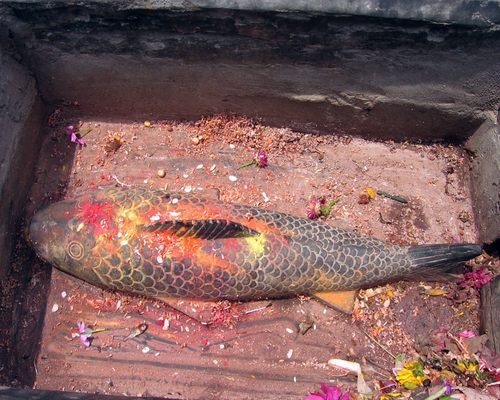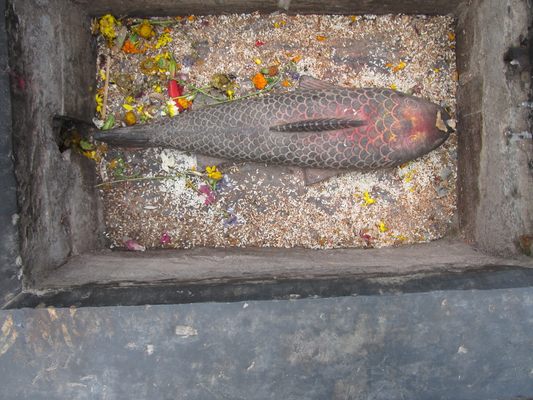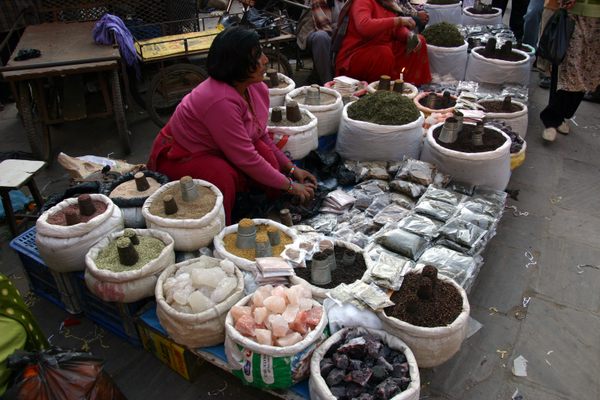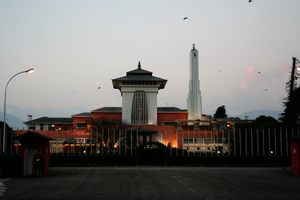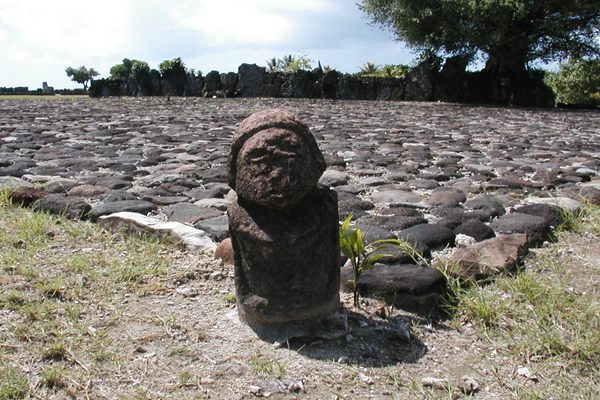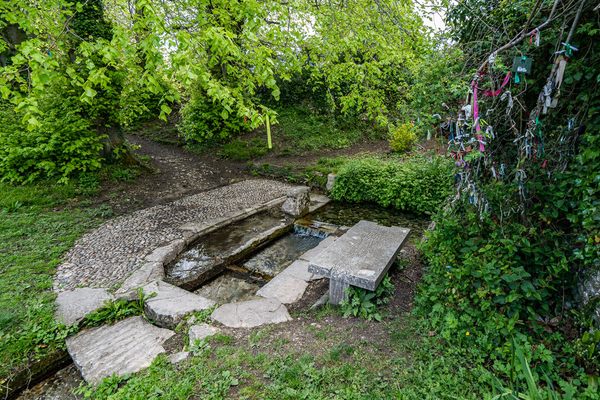About
Walking from Thamel, the main tourist district of Kathmandu, to historic Durbar Square, one will pass through the bustling market of Asan Tole. Amid the crowds and teeming stalls are several temples and shrines including a tikka-ed stone fish coyly hiding in plain sight.
The fish is easily overlooked since the adjacent Ganesh and Annapurna temples garner more attention. However, according to at least one legend, the Asan bazaar owes its name to a fish that fell at the location of the shrine. The origin of the name Asan is shrouded in mystery, but some believe it derives from the Newari word ansaa meaning “just there” or “nearby.”
As the story goes, a fish once fell from the sky during a heavy rainstorm. As the tale of the fish spread, visitors to Kathmandu would ask, “where did it fall?” and locals would reply “ansaa,” pointing to the spot where the shrine now stands.
Today, Asan is a primary market for locals and stands at the nexus of six streets that were an important meeting place along an ancient trade route between India and Tibet. Everything from spices and dried fish, to plastic toys and hardware, can be found in the bazaar. Those selling grains or rice are required to offer a portion of their goods to the temple dedicated to Annapurna Ajima, the goddess of abundance and the patron deity of the neighborhood.
The symbol of the fish is one of the more important avatars of the god Vishnu, who once transformed into Matsya (the fish) to save humanity from the great flood. The fish is also one of the Ashtamangala (the Eight Auspicious Signs) found in Hinduism, Jainism, and Buddhism. It's the focus of numerous religious parables.
Related Tags
Know Before You Go
The shrine is found in the Asan Tole market.
Community Contributors
Added By
Published
April 3, 2020
